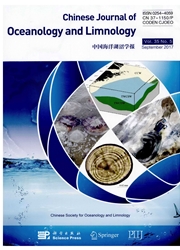

 中文摘要:
中文摘要:
为了发现是否长散布了元素(线),存在inmacro水藻染色体,我们在代表性的家庭(种类)测试了 LINE 相当或相同事物: Gracilaria ( G.eucheumoides Harv , G tenuistipitata Chang et 夏,和 G.textorii ( Sur ) De-Toni ), Laminaria ( L.longis-sima Miyabe 和 L.japonica Aresch ),和 Ulva ( U.lactuca L.and U.pertusaKjellm )在 2004~2005 期间。聚合酶链反应(PCR ) 被执行, degenerateoligonucleotide 教材从米饭相当或相同事物的线和玉米的 Cin4 设计了。克隆并且核苷酸定序 PCR 产品表明 4 克隆源于 3 种类 ofGracilaria 那有线相当或相同事物。4 个线相当或相同事物的核苷酸序列极大地分叉,但是从他们推出的氨酸序列相对被保存。LINE 相当或相同事物的 endonucleaseregions 极大地从另外的植物的分叉,但是他们在小球藻 sp 有更近种系发生的关系到 Zepp 元素,它显示由垂直传播的那顺序分叉是对海藻的线的进化的主要影响。
 英文摘要:
英文摘要:
In order to find out whether long interspersed elements (LINEs) existed in macro-algae gehomes or not, we tested the LINE homologues in representative families (species): Gracilaria (G. eucheumoides Harv., G. tenuistipitata Chang et Xia, and G. textorii (Sur) De-Toni), Laminaria (L. longissima Miyabe and L. japonica Aresch.), and Ulva (U. lactuca L. and U. pertusa Kjellm.) during 2004 to 2005. Polymerase Chain Reaction (PCR) was carried out with degenerate oligonucleotide primers designed from LINEs of rice homologues and Cin4 of maize. Cloning and nucleotide sequencing of the PCR products revealed that 4 clones that derived from 3 species of Gracilaria have LINE homologues. The nucleotide sequences of the 4 LINE homologues diverged greatly, but the amino acid sequences deduced from them were relatively conserved. The endonuclease regions of the LINE homologues greatly diverged from that of other plants, but they had closer phylogenetic relationship to Zepp elements in Chlorella sp., which indicated that sequence divergence by vertical transmission has been a major influence on the evolution of algal LINEs.
 同期刊论文项目
同期刊论文项目
 同项目期刊论文
同项目期刊论文
 Inter-simple sequence repeat (ISSR) analysis of genetic variation of Chondrus crispus populations fr
Inter-simple sequence repeat (ISSR) analysis of genetic variation of Chondrus crispus populations fr 期刊信息
期刊信息
